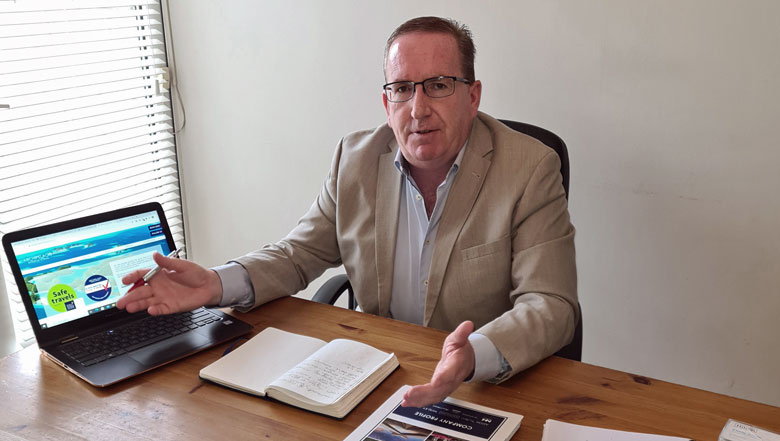In this interview with Cuba Business Report, Development Economist Dr. Emily Morris discusses GDP and economic development and the complicated task of transformation to the new economy of Cuba, among other topics.
Dr. Morris is a research associate at the UCL Institute of the Americas. From (1995-2008) she worked as the Senior Editor/Economist, Latin America and Head of Country Reports at the Economist Intelligence Unit (EIU) in London, and was the Country Economist for Belize at the Inter-American Development Bank (2014-17). Her current research is on Cuban macroeconomic management and performance in terms of national income and sustainable development goals.
Dr. Morris teaches at the UCL Institute of the Americas. She is also a consultant on Cuban, Caribbean and Latin American economies.
Cuba Business Report: On the relationship between GDP and economic development. Has it become easier to forecast short and long-term periods of economic growth with all the recent changes announced by the Cuban government?
Dr. Emily Morris
Measuring Cuban GDP is difficult. Estimates of the size of the economy vary widely because of the problem of valuation of production and incomes when market prices do not prevail; and calculating its growth from one year to the next is particularly challenging as the structure of the Cuban economy has altered greatly since 1997, which is the base year for Cuba’s GDP index. Part of the change in structure has arisen from the series of economic reforms since 1997. An important transformation has been the creation of a new non-state sector, the fortunes of which have frequently diverged from those of the rest of the economy. A large part of this new area of economic activity has been linked to the informal economy, complicating measurement of its impact on trends in real output, consumption and incomes.
The latest changes have complicated measurement further. Calculating real (that is, inflation-adjusted) economic growth from year to year is always made more challenging when there are sharp changes in relative prices, and 2021 will see extremely sharp changes in Cuba. Starting on January 1st of this year – ‘day zero’ of the ‘monetary reordering’ process – all prices and incomes are being radically realigned. While the government has some control of nominal state wages and is attempting to cap prices of many basic goods, the process of adjusting other prices will be an iterative one, as the new exchange rate, cost matrices feed through supply chains in the state and non-state sectors.
The extent to which the exchange rate reform and price liberalizations will feed through to an inflationary spiral – and thus exacerbate price instability – will depend on expectations and the strength of the supply response. Expectations are, of course, extremely uncertain; and the supply response depends on the capacity of domestic producers to alter production in the light of new relative prices. This structural adjustment will in itself make the existing relative weights of economic sectors used for calculating real aggregate growth less accurate, further complicating the measurement of real aggregate growth.
Eventually, as relative prices settle into a more stable structure, and that structure more closely reflects market prices, more accurate measurement of GDP and its annual real growth will become easier. But in the meantime, estimation of real economic performance will have a large margin of error, and the Cuban monetary authorities and statistical office (upon which the government relies for data to inform economic management decisions) will need to keep their systems of measurement under constant review.
Can we determine level of growth more accurately now from what appears to be an increased access to foreign currency (monetary unification, increased access to banking for non- resident Cubans and the emergence of the MLC stores)?
Dr. Morris:
Measuring flows of foreign exchange has always been relatively straightforward because we have a single measure of value: the US dollar (or other foreign currency equivalents at market exchange rates). Official data for these flows – that is, the data provided in Cuba’s external accounts – have not been complete or timely, leaving economists to depend on some estimations and guesswork, but nonetheless this has always been easier than measuring the value of domestic production. This has not changed.
Economic restructuring, the new economy: Tarea Ordenamiento–do you believe this restructuring will substantially transform the economy?
Dr. Morris:
My short answer is yes, definitely.
But we don’t know exactly how the economy will be transformed. If everything goes well, with the government able to contain expectations and economic actors responding quickly to the new price signals – investing and reorganizing to exploit new opportunities to boost foreign exchange earnings, increase productivity and reduce import dependence through greater efficiency – then the currency reform and realignment of prices will shift the economy onto a higher growth trajectory. But it is not possible to achieve such a structural change, in which labour moves from low-productivity to higher-productivity activities, entirely painlessly. Even in this positive scenario, there will be less job security, transformations of work practices that will be resented by some, and more unemployment.
If things don’t go so well, the economic disruption could result in a form of ‘transition recession’, as state and private enterprises have to cease production because they are no longer competitive, while new opportunities are created too slowly to compensate for the fall in output.
To avoid the negative scenario, the government has stated that state companies will have a year to adjust, with subsidies and credits to cushion them over the period of restructuring. This has some similarities with a strategy of ‘fiscally-cushioned big bang’ recommended in a 2013 Brookings Institution report (‘Exchange Rate Unification. The Cuban Case’, by Augusto de la Torre and Alain Ize). While this approach is feasible in theory and would serve to mitigate the economic and social cost of adjustment, in practice it will need development of sophisticated capacity (among enterprise managers, official authorities, and financial institutions) for highly complex evaluations, coordination, communication and negotiations.
Let’s discuss the business environment for foreign investors. Would you say it is improved with recent changes for foreign investors which include regulatory changes, an update to the annual Portfolio of Opportunities with projects worth $12.01 billion, new platforms (VUCE and VUINEX) to simplify the investment process, currency unification, and the ability for foreign entities to hold a majority share in their investments/joint ventures)?
Dr. Morris:
Cuban efforts to attract foreign investors – including the increased portfolio and new platforms – indicate that the Cuban authorities are serious about seeking an increase in foreign business partners. It is difficult to assess the success of their efforts to date. The relatively low level of investment has been blamed by both Cuban and foreign analysts on rigidities of the Cuban bureaucracy and/or the Cuban government’s ideological suspicion of international businesses (both of which are real), but for as long as U.S. sanctions remain in place, it is unlikely that foreign investors would be significantly more enthusiastic about the opportunities in the Cuban market even if Cuban officials and policy had been more welcoming.
Currency unification and the recent reforms will simplify the process of negotiating, evaluating and managing foreign businesses in Cuba, and may make a marginal difference in terms of the foreign investor appetite for the Cuban market, but the potential cannot be realized until U.S. sanctions are lifted to remove the threats to businesses engaging with Cuba.
What are your predictions for the Cuban economy? Given, there are two scenarios–one being the ramifications of an enduring pandemic which continues to affect the entire global economy, and the other, with vaccinations and other precautions-in-place, the eventual return to global health.
Dr. Morris:
In the context of current uncertainties – about the amount of foreign exchange reserves, the behavior of expectations and adjustment speed and costs within Cuba, as well as the prospects for U.S. sanctions – forecasting the Cuban economy is a very hazardous business.
For the two scenarios:
1. If we assume that the pandemic endures, Cuba’s tourism sector will remain extremely depressed, and the benefit from the expected relaxation of U.S. travel restrictions will be slow to arrive. Cuba’s economy is very open so such an unfavorable external environment will hit its capacity to import essential supplies of inputs, and weigh on prospects.
Having contracted by an estimated 11% in 2020 due to the foreign exchange shock (and this is likely to be an underestimate, as the informal sector’s woes, which feed through to household consumption and savings, are not likely to have been fully taken into account in official GDP estimates), the economy will struggle to return to growth in 2021. With external demand weak, prospects will depend upon the capacity to produce goods and services for the domestic market. Potential sources of growth are the relaxation of regulatory restrictions on the private sector and creation of stronger incentives (through price changes and decentralization of decision-making) for innovation in the public sector.
On balance, at this stage, my forecast would be for a flat-lining economy at the aggregate level: zero or a further contraction in 2021, albeit a less sharp decline than 2020.
Beneath the surface of this national growth figure we can expect substantial structural transformation, with the monetary reordering and other reforms resulting in some sectors growing and others contracting. This implies the persistence of severe economic hardship, low investment (and some degree of decapitalization) and rising official unemployment. Recovery would begin in 2022, accelerating in the medium term.
2. A return to global health would provide an external boost. Assuming that this is coupled with a relaxation of restrictions on travel to Cuba from the U.S., we can expect this to bring swift reanimation of economic activity in some areas, particularly in Havana, with the non-state sector enjoying the most immediate stimulus. Apart from the support to household incomes in the regions that host most international visitors, this would also provide some relief to the wider economy, with relaxation of the government’s foreign exchange constraint enabling a recovery in public investment, including infrastructure improvements, and reforms providing increasing scope for Cuban (state and non-state enterprises) to respond to new opportunities.
However, given the hazards and complexities of economic restructuring, and the need to replenish foreign exchange reserves after the damage incurred in 2020, growth in 2021 would still be modest. At this stage, more than 2-3% seems unlikely. That is, GDP would remain below its 2019 level, but the new growth industries would at least be able to offer opportunities to offset the contraction of sectors rendered unviable by the withdrawal of subsidies.
Structural change and rising productivity as a result of reforms should also pave the way for some acceleration of growth in the medium term.
In both these scenarios I assume that the price instability arising from monetary reform does not spiral out of control in 2021. During this challenging period of adjustment, the fact that the government retains substantial capacity to anchor prices and wages will serve to restrain the inflationary spiral, although it will be much harder to contain price pressures in the private sector, which is larger than it was when Cuba last experienced such a severe external shock in the early 1990s. In the final analysis, the Cuba’s large public sector and relatively robust social safety net should serve to support resilience and provide adequate underpinning to limit the cost of restructuring. But nonetheless, 2021 will be a testing year.
Thank you Dr. Morris for your valuable insight into the challenges facing Cuban economic restructuring presently taking place in the midst of the global Covid pandemic. It is a difficult time for all.

T.K. Hernández is co-founder and editor at Cuba Business Report. Her work has been published in various online news media publications. Hernández has supported fundraising for Cuba’s last two hurricane disaster relief campaigns and is a member of the Canadian Network on Cuba. She is also a member of The Writers Union of Canada, and ACES International Alliance of Editors. Ms. Hernández is the author of three books, most recently, “The Cuba Interviews: Conversations on Foreign Investment and Economic Development,” (Palgrave Macmillan, 2023).













